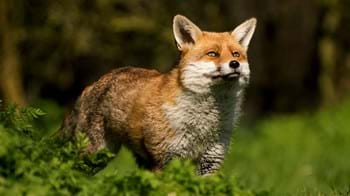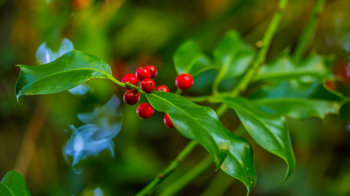
Nor Wood, Cook Spring & Owler Car
Dronfield

Woodland Trust wood
30.57 ha (75.54 acres)
SK373803
Explorer 278
OS Landranger 110
Stroll among the oak, ash, wild cherry and sweet chestnut of this semi-natural ancient woodland and it’s easy to forget you’re on the outskirts of the bustling city of Sheffield. These three adjoining woods have a tranquil, rural feel and support a wonderful range of wildlife.
The woodland has a wealth of birdlife, with at least 25 species recorded. While the woods may look wild and serene today, they have an important industrial history.
Features
- Public access
- Autumn colour
- Spring flowers
- Broadleaved woodland
How to get to Nor Wood, Cook Spring & Owler Car
This 31-hectare (76-acre) woodland is near the town of Dronfield in north-east Derbyshire, within 2km (1.2 miles) of the southern edge of Sheffield. The Peak District National Park is just under 5km (3 miles) to the west.
Leave the M1 motorway at Junction 29 and follow the A617 to Chesterfield for 6.4km (4 miles). At the roundabout, take the fourth exit (A61 signposted Sheffield). Continue on the A61 by taking the second exit at the first roundabout, and the third exit at the second roundabout.
At the next roundabout, 6.4km (4 miles) further on, take the second exit (B6057) and at the next roundabout take the third exit (B6158, Dyche Lane) towards Coal Aston. Access is off the B6056 from Coal Aston/Dronfield to Owler Car Lane.
The nearest train station is Dronfield, south of Sheffield. Coal Aston and the woods are 1.6km (1 mile) from Dronfield station.
Visit National Rail for more information.
The nearest bus stop is on Eckington Road.
Visit Traveline for more information.
Facilities and access
An extensive network of paths links with other paths over the neighbouring land and on to the city of Sheffield. A circular bridleway provides a link between Long Wood to the north and Owler Car Lane to the south.
Paths are earth-surfaced and can be slippery and muddy when wet. Some are steep, especially in the section that leads down from the parking at Owler Car Lane. The woods are not suitable for pushchairs or wheelchairs.
There are 14 entrances, including from Owler Car Lane; from the south across the footpaths over open fields into Nor Wood; and from Long Wood to the east, via bridges over Moss stream.
There is limited parking for one or two cars at the entrance off Owler Car Lane.
There is no public toilet nearby, but, there are plenty of pubs in Coal Aston in Dronfield with toilets available to customers.
Wildlife and habitats
Animals
The woods host mammals like foxes and badgers and also provide important habitats for invertebrates. Look out for the colourful goldfinch and visit between January and June to listen for the great spotted woodpeckers hammering away at the trees. If you’re lucky, you may even spot a turtle dove – an increasingly rare sight.
Trees, plants and fungi
The site is categorised as Ancient Semi-Natural Woodland (ASNW), although in the last two centuries it has undergone successive felling and replanting with non-native species. Cook Spring and Nor Wood have lots of dry oak woodland and the bulk of Nor Wood is ancient woodland dominated by broadleaf trees.
Habitats
Part of Cook Spring is designated a Site of Special Scientific Interest (SSSI) as it is one of Derbyshire’s most unchanged oak woods. The areas of ancient woodland at Nor Wood, Cook Spring and Owler Car provide valuable and specialised habitats for flora and fauna.
History of Nor Wood, Cook Spring & Owler Car
The woods appear on Burdett’s map of Derbyshire, drawn up in 1791, but the site is most likely to have been continuously wooded since 1600. It was previously part of the estate belonging to Renishaw Hall, the family seat of the Sitwell family. We purchased the woods from the estate in 1988.

Credit: Jill Jennings / WTML
Industry at Nor Wood, Cook Spring & Owler Car
The woods have a long history of human use. Owler Car has at least 25 hearths for producing white coal (kiln dried wood) used in lead smelting. There are also several other pits which appear to have been used for domestic quarrying, and 24 platforms which may have been associated with charcoal production for the smelting of iron ore.
Look out for coppice stools (stumps of trees that were repeatedly cut back for timber production) on your walk. There are also what appear to be the remains of former drainage networks, and an ancient woodbank, or boundary hedge, on the upper edge of Owler Car.
Things to do in Nor Wood, Cook Spring & Owler Car

Visiting woods
Walking dogs in our woods
Dogs are welcome for walkies in our woods. Take a look at our tips and guidelines for ensuring we keep our woods safe and special for dogs and wildlife.

Visiting woods
Events
Discover events at our woods and the festivals and fairs you can find us at soon.

Visiting woods
Things to do in the woods
Go on an adventure. Get closer to nature. Uncover history. Discover ways to explore the UK's woods whatever the season.


































